Pliers are one of those tools you grab without thinking. Whether you’re fixing a loose pipe, cutting wire, or holding a tiny part steady, they always come in handy. I’ve used pliers in my garage, kitchen, and even out in the yard — and every time, they prove why no toolbox is complete without them.
Why Every DIYer and Pro Needs Multiple Types of Pliers
When I started doing my own repairs, I thought one good pair of pliers was enough. I was wrong. Each type is made for a reason. Slip joint pliers handle light jobs, but they can’t twist wire like lineman’s pliers or reach tight spots like needle nose ones.
Once I built up a small set, I realized how much easier — and safer — every project became.
Tool Safety Standards You Should Know
If you do electrical or industrial work, check that your tools meet OSHA and ANSI standards. These ratings ensure the insulation and strength have been tested. It’s one of those small details that makes a big difference in safety.
Design of Pliers: Key Parts Explained
Before we wrap up, let’s look at what makes pliers work the way they do. Each part adds to their grip, comfort, and control.

1. Handles
The handles are the parts you hold. Most have rubber coatings for better grip and comfort.
Some brands — like Milwaukee or Klein — use soft, non-slip grips that make long jobs easier.
If you work with electricity, always choose insulated handles to stay safe from shocks.
2. Pivot (Joint)
The pivot is where both handles meet and move.
It’s what controls leverage and jaw motion.
A smooth, tight joint gives more power with less effort.
You’ll find a few common types: slip-joint, box-joint, and fixed joint designs.
3. Jaws
The jaws do the gripping.
They can be flat, serrated, or curved, depending on the task.
Hardened steel jaws hold tight and last longer, even under heavy pressure.
4. Cutting Edge
Some pliers — like lineman’s or diagonal cutters — have sharp cutting edges.
These let you cut wires, nails, or small bolts cleanly without fraying.
Keep them sharp and clean for the best results.
5. Nose or Tip
The nose, or tip, is the narrow end for fine work.
Long noses reach into tight spots, while shorter ones give more strength when gripping.
If you’ve ever worked with electronics or jewelry, you know how handy this part is.
6. Spring Mechanism
Some smaller pliers have a spring that opens them after each squeeze.
It’s a small feature but makes repetitive tasks easier on your hands.
You’ll see it often in pliers used for jewelry or circuit work.
Main Types of Pliers and Their Uses
I’ve found that each plier has its own strength. Once I used the right one for each task, my projects got easier. Here’s how I use different types of pliers in daily life — simple, honest, and based on real jobs I’ve done at home.
1. Slip Joint Pliers
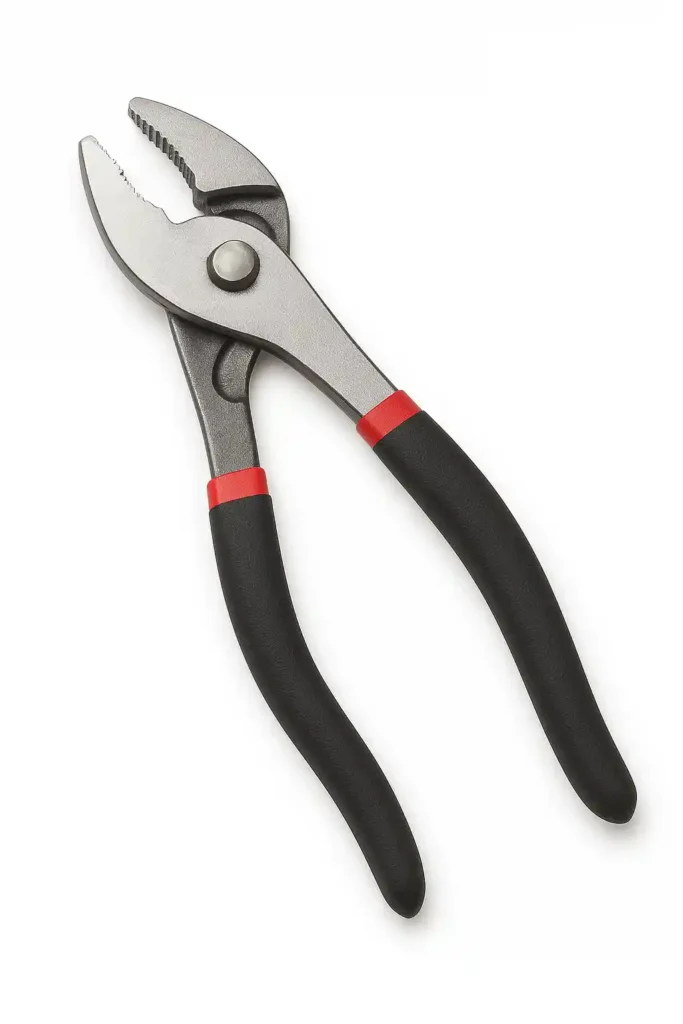
These are classic, all-purpose pliers. The jaws adjust wider for bigger parts. I use them for quick repairs and small household fixes.
Daily Uses:
- Tightening a loose garden hose or faucet nut
- Opening stuck jar lids or bottle caps
- Bending or straightening small nails
- Pulling out staples or tacks from wood
- Keeping a pair in the kitchen drawer for quick help
2. Lineman’s Pliers
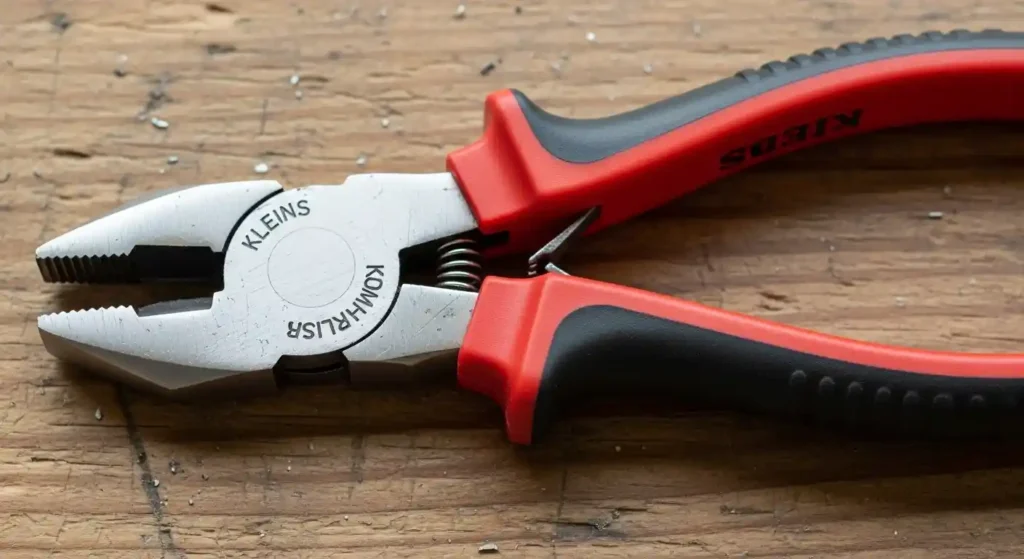
Strong and steady, these pliers are made for wire work. The jaws grip tight, and the cutting edge slices through wire fast. I reach for them when doing home wiring.
Daily Uses:
- Cutting and twisting copper or aluminum wire
- Installing or fixing outlets and switches
- Holding metal parts while soldering
- Snipping old cords or thick wire cleanly
- Trusted by many U.S. electricians for their safety and build
3. Needle Nose Pliers
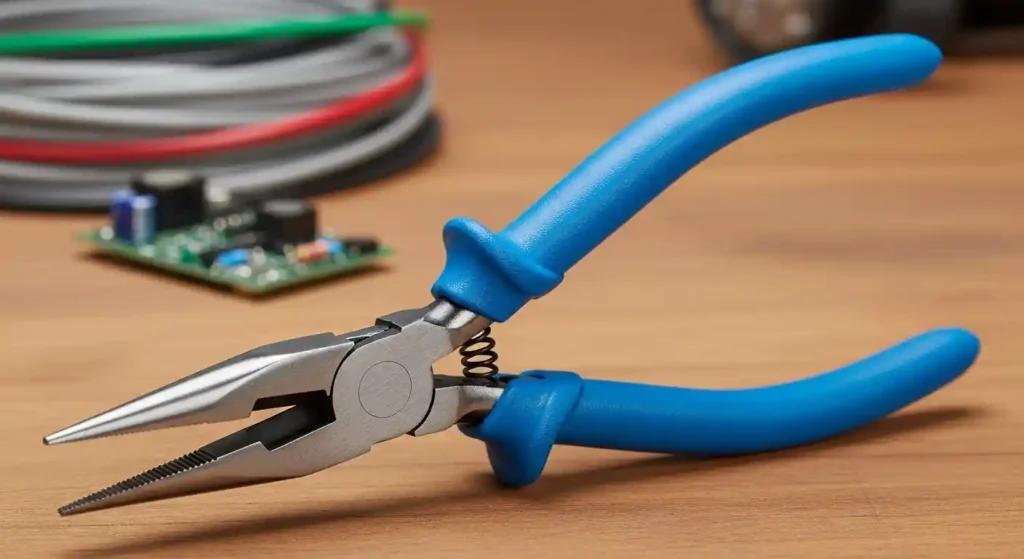
These pliers have long, slim jaws that fit tight spaces. I grab them when my fingers can’t reach. They’re perfect for fine, careful work.
Daily Uses:
- Pulling out tiny screws or fuses
- Fixing electronics or phone cables
- Repairing fishing lures or tackle
- Reaching small nuts or washers in narrow spaces
- Handy for detailed and delicate repairs
4. Diagonal Cutting Pliers (Dikes)

Sharp and simple, these pliers are made to cut. They slice wire clean without crushing it. I use them for wiring, crafts, and repairs.
Daily Uses:
- Cutting zip ties, cable ends, and soft wire
- Snipping small nails and pins
- Trimming extra wire after connections
- Cutting craft or jewelry wire
- Avoiding hard steel to keep blades sharp
5. Tongue-and-Groove Pliers (Channel Locks)
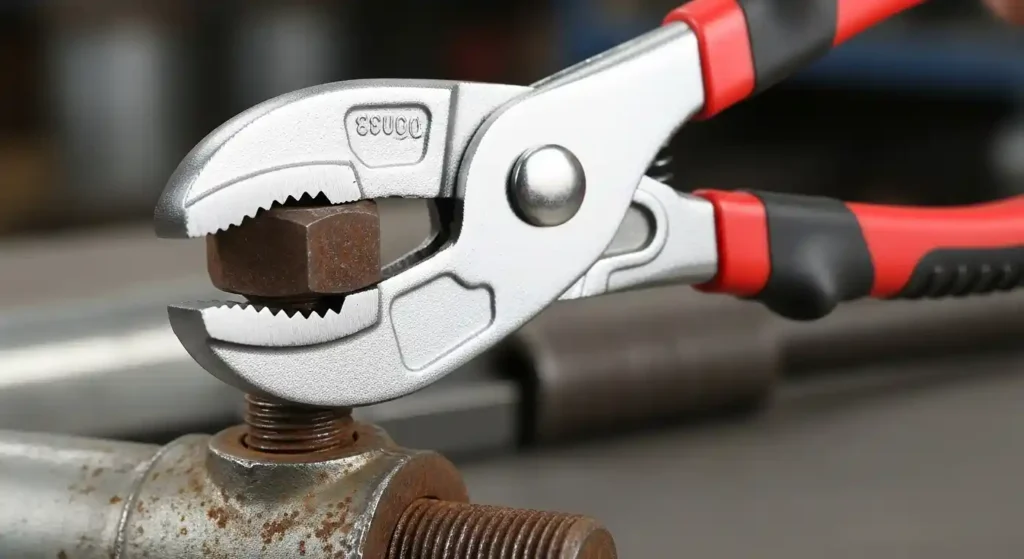
These pliers are strong and adjustable. The wide jaws grip almost anything — round, flat, or uneven. They’re my top pick for plumbing work.
Daily Uses:
- Tightening or loosening plumbing pipes
- Replacing sink traps or faucets
- Holding wet or slippery metal parts
- Adjusting large nuts or bolts
- Common in U.S. homes — Channellock tools are a local favorite
6. Locking Pliers (Vise-Grips)

These pliers lock and stay tight until I release them. I call them my “third hand” because they hold firm when I can’t.
Daily Uses:
- Loosening rusted nuts and bolts
- Clamping metal for welding or drilling
- Holding wood or pipes steady
- Turning broken or tight bolts
- Great for car, bike, and home repair work
7. Bent Nose and Chain Nose Pliers
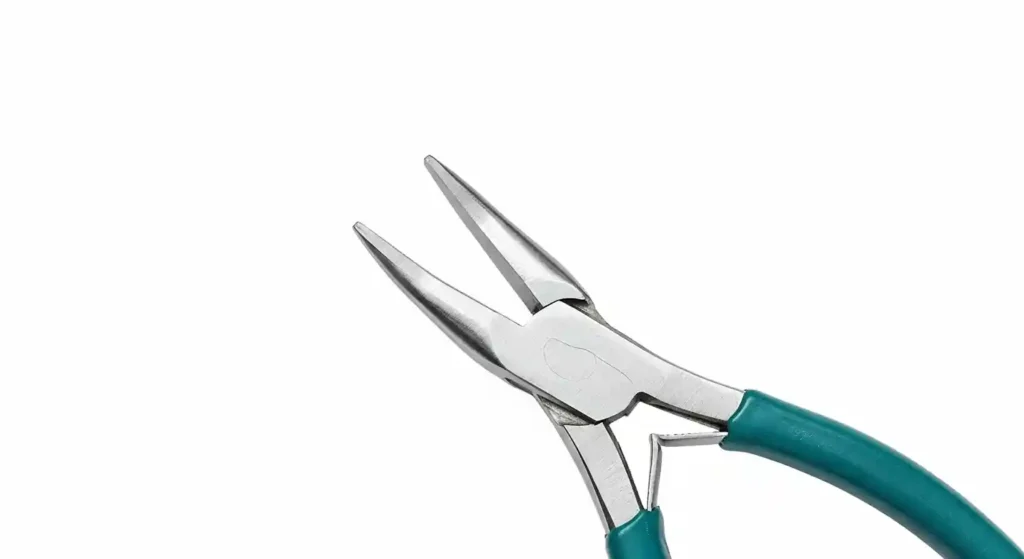
Small and precise, these are made for craft and detail work. The bent nose gives a clear view, while the chain nose helps shape wire.
Daily Uses:
- Bending or looping craft and jewelry wire
- Repairing small electronics or eyeglass frames
- Reaching corners and tight spots
- Holding tiny parts during repairs
- Ideal for hobbies, crafts, and light DIY jobs
How to Choose the Right Pliers for the Job
Choosing the right pliers can save time — and frustration.
Here’s what I always keep in mind before picking one:
- Match the jaw shape and size to what you’re doing.
- Look for soft, comfort grips if you’ll use them for long periods.
- Pick insulated handles when working with electricity.
- Go for forged steel if you want lasting strength.
- Keep them clean, oiled, and dry to stop rust.
A clean, smooth tool works better, feels nicer, and keeps you safer.
Download PDF: Types of Pliers and Their Uses
Pro Tips for Safe and Effective Use
Even good pliers can fail if used the wrong way.
Here are a few habits that help me keep things safe and easy:
- Don’t use pliers as a hammer or wrench.
- Avoid cutting hard wires with standard cutters.
- Always wear safety glasses when cutting wire.
- Check handle insulation before using them near live circuits.
- Store pliers in a dry toolbox to prevent rust.
Small habits like these keep your tools in shape — and your hands safe.
Final Thoughts
Having a few types of pliers means you’re ready for almost any job — from fixing a pipe to rewiring a light.
Whether you trust Milwaukee for power or Craftsman for comfort, knowing which one to grab saves time and effort.
Once you use the right pliers for each task, you’ll never go back to relying on just one pair.
FAQs About Pliers and Their Everyday Uses
What are the main types of pliers used for home repairs?
Slip joint, lineman’s, needle nose, and locking pliers are the most common. Each helps with gripping, twisting, or cutting tasks around the house.
Which pliers should I use for electrical work?
Lineman’s pliers are best for cutting and twisting wires. Always pick insulated handles to stay safe when working near electricity.
What are needle nose pliers used for?
Needle nose pliers reach tight spaces and handle small parts. They’re great for electronics, jewelry repair, or any job needing fine control.
Can I use pliers to cut metal or nails?
Yes, diagonal cutting pliers work for soft metal or small nails. Avoid cutting hardened steel to keep the blades sharp longer.
How do I choose the right pliers for my project?
Match the pliers to the job. Use slip joint for general work, lineman’s for wires, and tongue-and-groove for plumbing or larger fittings.

